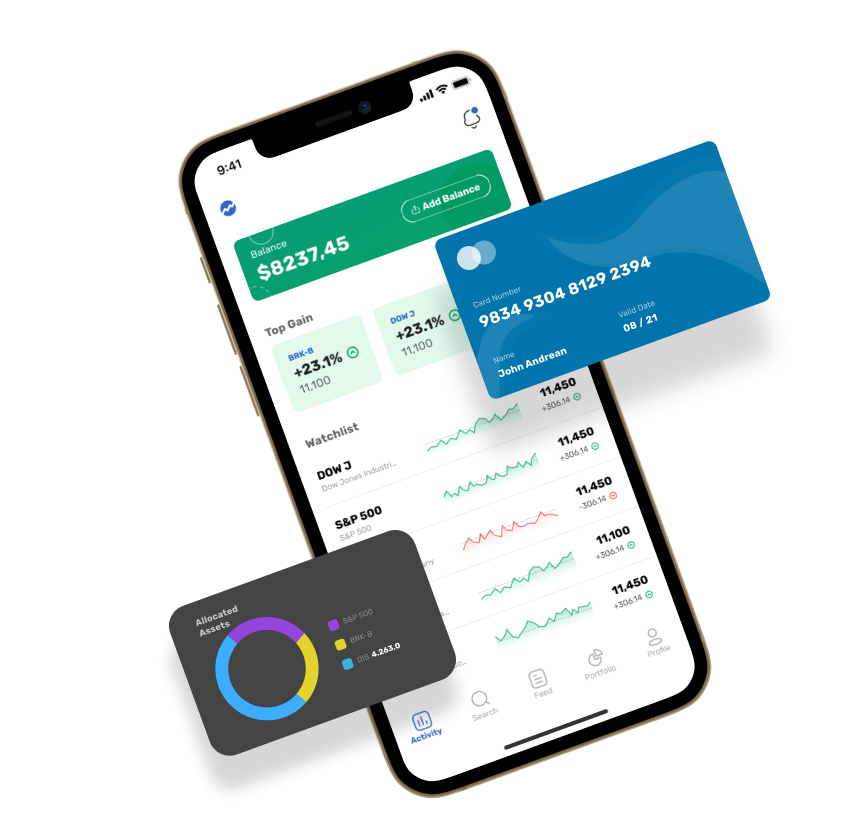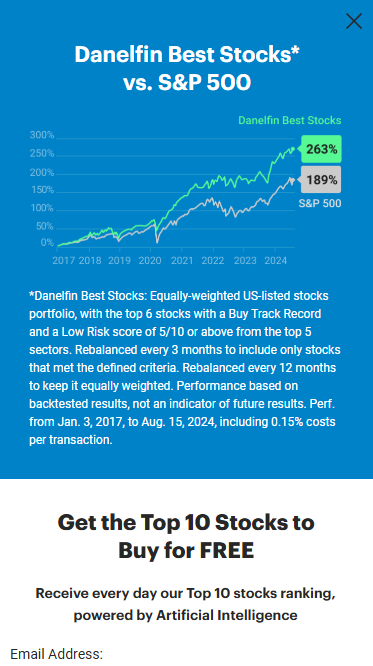20 Recommended Facts For Choosing AI Stock Prediction Websites
20 Recommended Facts For Choosing AI Stock Prediction Websites
Blog Article
Top 10 Tips To Customize Ai Trading Platforms To Your Strategy
It is vital to know that AI trading platforms with stock analysis and prediction can give users the ability to customize their platform to meet their trading objectives, risk tolerances, and market conditions. Platforms that offer a variety of customizable options can help you improve your trading. Here are the top 10 suggestions for assessing the ability to customize your strategy on these platforms:
1. Evaluate Pre-Built Strategy Templates
A variety of templates: Find out whether the platform offers a variety of built-in trading strategies (e.g. day trading and swing investing, as well as long-term investments).
You are able to easily alter the templates and adapt them to meet your needs.
Performance history: See if you can access past performance data of strategies that you have already built.
2. Assess the Custom Strategy Development
Drag-and-drop tools: Look for platforms that have intuitive drag-and drop interfaces for creating custom strategies.
Options for Coding: For advanced users, check if the platform allows custom coding in a scripting language that is proprietary (e.g. Python, R).
Flexibility. You must define the key elements like the parameters for risk management, entry and exit regulations, as well as any other components that comprise your plan.
3. Check for Backtesting Capabilities
Historical data: Make sure that the platform has sufficient historical data to backtest strategies.
Flexible parameters - Make sure you have the ability to change parameters (e.g. timeframes, indicators) when back-testing.
Performance metrics: Determine if the platform includes precise performance metrics such as win rate (e.g. Sharpe ratio) drawdown, win rate and other metrics, for strategies that have been tested back.
4. Evaluate Real-Time Strategy Testing
Paper trading: Check that the platform offers the option of paper trading as well as simulation mode for testing strategies in real-time without placing your money at risk.
Live testing: Determine if you are able to test your strategies on real market conditions with small amounts of capital.
Real-time adjustments: Check to see if your strategy can be adjusted in real time according to market conditions.
5. Integrate Integration with Technical Indicators
Indicator libraries: Make sure your platform comes with a comprehensive toolkit for technical analysis (e.g. MACD, RSI and moving averages).
Custom indicators. Ensure that you have the ability to design or implement custom indicators in your strategy.
Combination of indicators Examine to see if the system allows combining multiple indicators to support complex strategies.
6. Check for Risk Management Tools
Stop-loss/take-profit: Ensure the platform allows you to set stop-loss and take-profit levels within your strategies.
Size of your position - Check to see if there are any rules you could follow (e.g. an amount fixed or a percentage of your portfolio) for managing risk.
Risk-reward rate: Verify whether the platform permits setting risk-reward rates specific to strategies or for individual trades.
7. Evaluate Multi-Asset Strategy Support
Asset Classes: Make sure that the platform can support strategies for a variety of asset types (e.g. ETFs, Options, Forex and Stocks).
Cross-asset strategies: Check whether you can develop strategies that use different asset classes (e.g. pairings trading, hedging).
Market coverage: Determine whether the platform has the services you need (e.g. US, international or cryptocurrencies).
8. Evaluate the automation, Execution and Execution
Automated trading. Ensure the platform supports automated execution that is based on predefined strategies.
Types of orders: Examine to see if the system permits different order types (e.g. limit or market) when executing a strategy.
Latency: Verify that the platform has a minimal latency for trading, particularly if you are using high-frequency strategies.
9. Take a look at the Strategies Optimization Tools
Parameter optimization: Ensure the platform provides tools to optimize the parameters of your strategy (e.g. grid search and genetic algorithms).
Machine learning: Make sure the platform you choose to use has machine learning to help refine and optimise strategies.
Scenario analysis: Make sure that the platform is able to test strategies under different market conditions (e.g. volatile bull, volatile, bull or bear).
10. Review Community Feedback and User Feedback
The feedback of users is crucial to understand the effectiveness of a platform.
Forums for community members. Verify if members are able to share information and discuss their strategies in a vibrant community.
Support resources: Ensure the platform offers tutorials, webinars or documents to assist users create and optimize strategies.
Bonus Tips
Trial period - Take advantage of the trial period for free to try out the ability to customize your strategy.
Scalability: Ensure the platform is able to handle complex strategies that evolve as you trade.
Support for customers: Check whether the platform provides support for strategy-related issues or questions.
With these suggestions, you can evaluate the capabilities of an AI software to predict and analyze stocks on a trading platform in order to customize strategy. This will allow you to choose a platform that aligns with your objectives in trading and permits you to implement and refine strategies. A platform that offers a wide range of customization options can help you better adapt to market fluctuations and boost your trading performance. Have a look at the top rated look what I found on investment ai for blog recommendations including trading ai, stock ai, AI stock market, incite, ai trading, ai investment platform, chatgpt copyright, stock ai, best AI stock trading bot free, ai trade and more.
Top 10 Tips On Assessing The Scalability Ai Stock Predicting Trading Platforms
It is crucial to evaluate the capacity and performance of AI-driven stock prediction and trading platforms. This will guarantee that they are able to handle growing data volumes in addition to market complexity and demands from users. These are the top 10 suggestions to assess scalability:
1. Evaluate Data Handling Capacity
TIP: Ensure that the platform is able to process and analyse large databases.
The reason: A scalable platform should be capable of handling the ever-growing amount of data without compromising performance.
2. Test Real-Time Processing Skills
Check how the platform handles real-time data streams such as stock prices and breaking news.
The reason: Analyzing in real-time is crucial in trading decisions, and delays can lead to missing opportunities.
3. Cloud Infrastructure Elasticity and Check
Tip. Find out if the platform utilizes cloud-based infrastructure like AWS, Google Cloud and Azure, which can scale resources on demand.
Why cloud platforms are so popular: They provide flexibility, allowing the system to scale up or down based on demand.
4. Algorithm Efficiency
Tips: Examine the efficiency of computation in AI models (e.g., deep learning, reinforcement learning) that are used to make predictions.
The reason is that complex algorithms can be resource-intensive. Making them more efficient to make them scalable is important.
5. Explore Parallel Processing and Distributed computing
Tip: Check if the platform supports distributed computing or parallel processing frameworks (e.g., Apache Spark, Hadoop).
What are they: These technologies speed up data processing and analysis on multiple nodes.
6. Review API Integration and Interoperability
TIP : Make sure the platform is compatible with other APIs, such as brokers and market data providers. APIs.
What's the reason? Seamless integration enables the platform to be adapted to the changing environment of trading and data sources.
7. Analyze User Load Handling
Tip: Simulate high user traffic to test how the platform performs under pressure.
The reason: Scalable platforms must deliver the same quality of service regardless of how many users are there.
8. Assessment of Model Retraining and the Adaptability
Tip: Assess how frequently and effectively the AI models are being retrained using new data.
Why? Models have to constantly adjust to changing markets to ensure that they remain precise.
9. Check for Fault tolerance and redundancy
Tips. Make sure that your platform is equipped with failover systems and redundancy for hardware orsoftware problems.
The reason: Downtime is costly in trading, so fault tolerance is vital to ensure the ability to scale.
10. Monitor Cost Efficiency
Tip: Evaluate the cost of scaling the platform, which includes cloud resources, data storage and computing power.
Why: Scalability must not be at the expense of insufferable costs. Therefore, it is crucial to find a balance between performance and cost.
Bonus Tip: Future-proofing
Check that the platform can be able to adapt to changes in regulation and incorporates new technologies, such as quantum computing or advanced NLP.
By focusing on these elements it is possible to evaluate the capacity of AI stock prediction and trading platforms, ensuring they're robust, effective, and ready for future growth. See the recommended his comment is here about ai share trading for more examples including free AI stock picker, ai options trading, best ai trading platform, ai for trading stocks, ai for trading stocks, best ai trading platform, best AI stock prediction, ai trading tool, stock trading ai, chart ai trading and more.